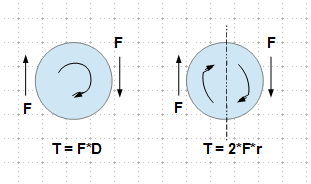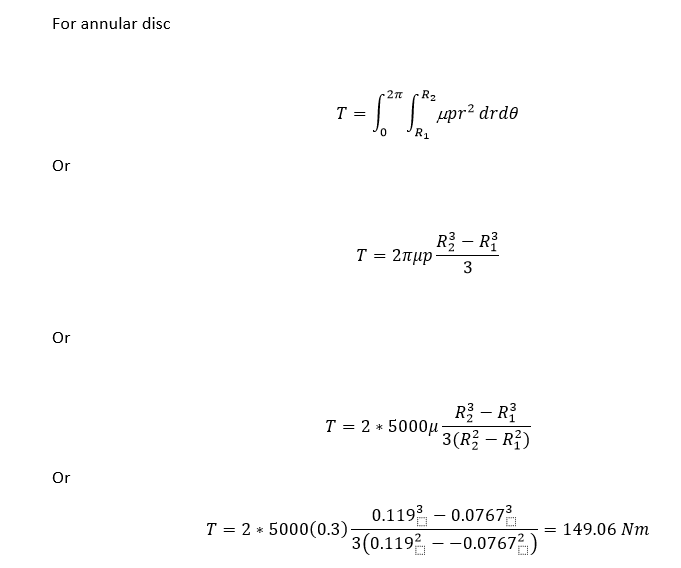Abhijeet242
Mechanical
- Nov 28, 2020
- 21
We know that the torque is Force x moment arm. Here in this case why the moment arm is not radius. The real problem for me is that, I am calculating friction torque required by the rotating disc to overcome.
Here the I have done the calculations with below 2 methods:
1. In close approximation with Bolt torque :
Its a plain disc in Martensitic SS rotating on the fixed Bronze plate and acting as a bearing. The axial load is 500 kg including weight of the rotor. Hence like in case of bolt torque, we can say, the Axial force = 500 x 10 = 5000 N ( assuming g = 10 m/s2).
Now, T = 0.3 x 5000 x Avg. dia of the disc ( ( Inner dia. + Outer dia.)/2)
T = 0.3 x 5000 x ((0.119+0.0767)/2)
= 146.77 N-m
2. Considering simple approximation,
T = F x r = 0.3*5000*Avg. radius
= 73.38 N-m
So which one is correct? 73 or 146 Nm of torque?
Here the I have done the calculations with below 2 methods:
1. In close approximation with Bolt torque :
Its a plain disc in Martensitic SS rotating on the fixed Bronze plate and acting as a bearing. The axial load is 500 kg including weight of the rotor. Hence like in case of bolt torque, we can say, the Axial force = 500 x 10 = 5000 N ( assuming g = 10 m/s2).
Now, T = 0.3 x 5000 x Avg. dia of the disc ( ( Inner dia. + Outer dia.)/2)
T = 0.3 x 5000 x ((0.119+0.0767)/2)
= 146.77 N-m
2. Considering simple approximation,
T = F x r = 0.3*5000*Avg. radius
= 73.38 N-m
So which one is correct? 73 or 146 Nm of torque?

![[sad] [sad] [sad]](/data/assets/smilies/sad.gif)



